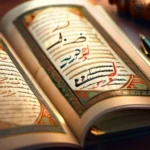Explore the fundamental principles, practices, and unique aspects of Shia Islam in this detailed guide.
Shia Islam is one of the two main branches of Islam, with a rich history and distinct beliefs. In this article, we delve into the core tenets that define Shia Muslims and their faith.
The Foundations of Shia Islam
The Foundations of Shia Islam: Explore the key principles that form the foundation of Shia Islam, including the concept of Imamah and the role of the Twelve Imams.
Imagine a tree whose roots run deep into the ground, providing strength and stability. In the same way, the core beliefs of Shia Islam serve as the foundational pillars for its believers, guiding their spiritual journey much like a sturdy tree stands tall against the winds of change. What are these essential principles that hold Shia Islam together? Let’s delve into them.
One of the most fundamental concepts in Shia Islam is Imamah. This idea centers around the belief that the first caliph, Abu Bakr, was not the rightful leader after the Prophet Muhammad. Instead, they believe that leadership should have remained within the family of the Prophet, specifically with his son-in-law Ali and subsequent descendants known as the Imams.
Think of Imamah like a beacon guiding a ship through stormy seas. Just as a lighthouse ensures safe passage, these revered Imams are seen as guides who interpret God’s will and provide direction for their followers. The Twelve Imams in particular hold a special place, with their roles extending beyond political leadership to encompass spiritual guidance.
Each Imam is believed to be a vicegerent of God, acting as both a human and divine link between the people and Allah. Their wisdom and righteousness are not just historical figures but living examples for Muslims to emulate, much like the stars guiding travelers through the night sky.
The role of these Imams is so crucial that it’s often described as an extension of the Prophet Muhammad himself. Just as a river continues to flow even after its source has passed, Imamah ensures continuity in spiritual leadership from one generation to another.
The Importance of Hadith in Shia Islam
The importance of Hadith in Shia Islam cannot be overstated. These traditions, which recount the sayings and actions of the Prophet Muhammad and his companions, serve as a vital source of guidance for followers of this sect. But how do these Hadiths differ from those followed by Sunnis? Is there a unique interpretation within Shia tradition that sets it apart?
Shia Muslims place great emphasis on Hadith al-Ghadir, where the Prophet Muhammad is reported to have declared Ali as his successor. This event, they believe, provides a clear directive from God regarding who should lead the Muslim community after the Prophet’s passing. Sunni and Shia interpretations diverge here, with Sunnis focusing more on consensus among scholars for leadership succession.
Another key difference lies in the acceptance of Hadith al-Thaqalayn. According to this Hadith, the Prophet Muhammad stated that he was leaving behind two precious things: the Quran and his family (the Ahl al-Bayt). Shia Islam holds these traditions as equivalent in importance to the Quran itself. Sunnis, while also valuing the Hadith of Thaqalayn, prioritize the Quran over the sayings of the Prophet’s family.
These distinctions are not just academic; they shape the core beliefs and practices of both sects profoundly. For Shias, adhering to these specific Hadiths is seen as a path to spiritual guidance and salvation. They often interpret events like the Battle of Karbala through the lens of these traditions, finding divine wisdom in every detail.
Understanding the significance of Hadith in Shia Islam requires recognizing its role not just as historical records but as living guides that continue to influence religious practices and spiritual development. This chapter aims to shed light on how these teachings are integral to the Shias’ understanding of their faith, setting them apart from Sunni interpretations.
By delving into these Hadiths, one can gain a deeper appreciation for the rich tapestry of Shia Islam, where every word and action is seen as part of a grand narrative directed by divine will. How do you see your role in this ongoing tradition? Are you inspired to explore these teachings further?
Mourning Muharram: Ashura and Arbaeen
Mourning Muharram: Ashura and Arbaeen are two pivotal moments in Shia Islam, rich in history and significance. Have you ever pondered why these days hold such profound importance for Shias? Let’s delve into the heart of this journey through time, where emotions and beliefs intertwine like threads in a complex tapestry.
Ashura, the tenth day of Muharram, marks a pivotal moment when Imam Hussein, the grandson of Prophet Muhammad, chose to stand up against tyranny and oppression. In a metaphor, this event can be seen as a lighthouse in the darkness of injustice, guiding Shias towards values like courage and integrity. The story of Imam Hussein is not just historical; it’s a call for justice that reverberates through the centuries.
During Arbaeen, forty days after Ashura, pilgrims from around the world converge on Karbala to commemorate this sacrifice. This pilgrimage is more than a physical journey; it’s an emotional and spiritual one. Imagine walking alongside thousands of people who share your beliefs, sharing in the sorrow and the hope for change. It’s a moment where personal struggles blend with communal strength, creating a powerful bond.
For Shias, these rituals are not just about remembering the past; they’re about shaping the present and future. Through mourning, they find ways to connect deeply with their faith, questioning what it means to be a true follower in today’s world. The rituals of self-flagellation or wearing black clothes serve as stark reminders of the sacrifices made for justice, urging individuals to reflect on their own actions and stand up against injustice wherever they find it.
The significance of Ashura and Arbaeen lies in their ability to inspire not just personal piety but also a commitment to social responsibility. As you walk through these events, can you feel the weight of history? Can you hear the echoes of the past urging you towards action?
The Role of Women in Shia Islam
The role of women in Shia Islam has long been a subject of curiosity and debate, much like a complex puzzle where every piece fits but requires careful assembly to reveal the full picture. Are women merely spectators in this faith’s grand narrative, or do they play an integral part? The answer lies in understanding both their participation in religious practices and their status within the community.
Firstly, let’s consider the role of women in prayers and worship. In Shia Islam, women are encouraged to participate fully, much like every leaf plays a vital role on a tree. They can perform all five daily prayers (salat) just as men do, offering their salaams (prayers) with devotion. However, there are some practices specific to women, such as the nikah mut’ah, a temporary marriage contract which allows for greater flexibility and mutual understanding in marital relationships.
Moreover, women in Shia communities often take on leadership roles within religious gatherings, providing guidance and support much like guiding stars in the night sky. The tradition of Ziyarat, visiting shrines and gravesites of revered figures, is another area where women play a significant part. These visits not only offer spiritual benefits but also foster a sense of community and shared faith.
Yet, it’s important to acknowledge that while these roles are recognized, societal norms often influence the extent of participation. In some regions, traditional gender roles may limit how openly women express their religious observance. This highlights the need for ongoing dialogue and reinterpretation within the community to ensure all voices are heard.
As we explore further into the unique aspects of Shia Islam, it becomes evident that while there are differences in interpretation, women’s roles are far from static. Just like a river carving its path through stone over time, so too do societal perceptions and practices evolve within the community to reflect evolving understandings of gender equality.
Shia Islam and the Twelve Imams: A Historical Overview
In Shia Islam, the concept of the Twelve Imams plays a pivotal role, almost like a lifeline in a turbulent sea. Imagine these twelve men as beacons of guidance and light, each chosen to lead the faithful after the Prophet Muhammad’s passing. Who were these individuals, and why are they so revered? The first Imam, Ali ibn Abi Talib, is seen not just as a leader but almost as a symbol of righteousness itself, his role in Shia Islam akin to that of a lighthouse guiding ships through treacherous waters.
The Imams are considered the Ma’sumin, meaning they are free from sin and error. This belief underscores their status as infallible guides, much like how saints are seen in other faiths. Each Imam is believed to possess unique spiritual qualities, enhancing their role beyond mere leadership. For instance, Imam Husayn ibn Ali’s stand at Karbala became a symbol of resistance against oppression and injustice, his sacrifice embodying the essence of righteousness and self-sacrifice.
These Imams are not just historical figures; they are spiritual guides for Shia Muslims. Their teachings and guidance are deeply integrated into daily life, influencing practices from prayer to charity. The concept of Imamate extends far beyond their roles as leaders; it is a foundational belief that shapes the very fabric of Shia identity.
Understanding the roles of these twelve Imams requires delving into their lives and legacies. It’s akin to tracing the roots of a mighty tree, revealing its strength and depth. Each Imam had unique contributions, from scholarly works to spiritual leadership, making them indispensable figures in Shia history. Their influence extends to rituals such as Ashura, where pilgrimages are made to Karbala, honoring Imam Husayn’s sacrifice.
Through the lens of history, these Imams have not only guided but also protected and sustained the community during times of persecution. Their stories and teachings continue to inspire and provide a framework for moral and spiritual leadership in Shia Islam, ensuring their legacy lives on in the hearts and minds of believers worldwide.
The Influence of Shia Islam in Modern Times
The modern era has witnessed Shia Islam transform from a historical movement into a vibrant and influential force on the global stage. One can hardly open a newspaper or scroll through social media without encountering discussions about its political and social influence, which often leaves one pondering: how did this once marginal religious tradition become so pivotal in contemporary world affairs?
The answer lies in the evolution of Shia Islam, particularly the roles played by its leaders and communities. As the 20th century progressed, the geopolitical landscape shifted dramatically, giving rise to new challenges and opportunities for Shia Muslims. This period saw Shia Islam adapt and thrive in diverse contexts, from the Middle East to South Asia, and even beyond.
Political Influence: Consider Iran’s transformation under the leadership of Ayatollah Khomeini. His revolutionary ideas not only reshaped Iranian politics but also inspired movements elsewhere, raising questions: Can a single charismatic leader truly shape an entire nation’s political landscape? The answer is yes, and this example illustrates how Shia Islam can serve as a unifying ideology for political change.
Social Impact: In regions where Shia communities face discrimination or marginalization, their religion often provides a strong sense of identity and community. This resilience can be seen in various parts of the world, prompting one to wonder: How does religion provide solace and strength in times of adversity? For many Shias, it offers more than just spiritual guidance; it’s a lifeline in challenging circumstances.
Moreover, Shia Islam has contributed significantly to fields such as science, education, and culture. Figures like Grand Ayatollah Ali al-Sistani have played crucial roles in bridging the gap between traditional Islamic scholarship and modern issues. This highlights another layer of influence: How can religion evolve while maintaining its core principles?
In conclusion, understanding Shia Islam in modern times requires acknowledging both its historical roots and its dynamic contemporary presence. As one delves deeper into this complex tapestry, it becomes evident that Shia Islam is not just a religious tradition but a multifaceted force that continues to shape the world we live in.
Conclusion
 By understanding the key principles of Shia Islam, you will gain a deeper appreciation for its unique practices and the devotion of its followers.
By understanding the key principles of Shia Islam, you will gain a deeper appreciation for its unique practices and the devotion of its followers.











